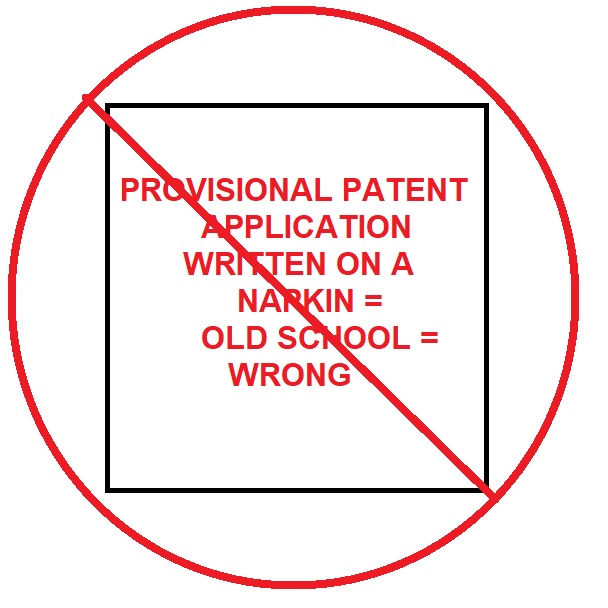To File A Provisional Patent Application or Not To File a Provisional Patent Application: that is the question for Solo Inventors and Start-Ups in the U.S.A.
But the better question Solo Inventors and/or Start-Ups should ask their patent practitioner (whether that practitioner is a patent agent or patent lawyer) is this: if a patent practitioner writes a provisional application in ten pages or less, including visuals (i.e. patent figures), ask the patent practitioner if he/she will use the exact same document when the non-provisional application is prepared and filed at a maximum of a year later? If the patent practitioner will need to add more pages and/or more visuals in the non-provisional application compared to the provisional application, then there is something wrong with the patent practitioner’s understanding of U.S. Patent Law.
I raise this issue because there seems to be some inconsistency among patent practitioners who preach that they can prepare a provisional application for much less money (and hence time) than a non-provisional patent application. As I explain in my patent primer available for free on my website (www.YourPatentExpert.com), there should be no differences between provisional applications and non-provisional patent applications with respect to their technical content. Both documents need to be "enabled" under the U.S. Patent Statutes - i.e. 35 U.S.C. 111(a) -- which means, that one or ordinary skill in the art must be able to make, build, and use the invention after reading a provisional application or a non-provisional patent application.
Many patent practitioners and many companies prepare and file "cover-sheet" provisional patent applications meaning that such provisional applications are really short, and thus, easy to prepare -- while saving you, the client, money. This is a huge misconception that I attribute to the change in U.S. Patent law which occurred in 2013.

Prior to 2013, the United States was a first to invent country under U.S. Patent Law. During and after 2013, U.S. Patent Law is now a first-to-file country with some caveats on when an inventor can file their first case, whether that first case is a provisional or non-provisional case.
Provisional patent applications, prior to 2013, could be short and be properly characterized as "cover-sheet" provisionals when the document only served to establish conception under the first-to-invent old U.S. Patent Laws. But now, under the "new" first-to-file U.S. Patent Laws post 2013, provisional patent applications can only serve as a first patent application filing that can be referenced by a later non-provisional patent application. And the first patent application filing, whether it is a provisional or non-provisional patent application, must be "enabling" to one of ordinary skill in the art: one of ordinary skill in the art must be able make, build, and use the invention after reading either a provisional application or non-provisional application.
The analogy that I have used with some of my clients is this: suppose you have invented a new TV remote controller that has several buttons and electronics within the controller to make these buttons perform their functions. A "cover sheet" provisional patent application that some patent practitioners file for solo inventors and start-up companies is like a photograph taken of the remote controller. A single page photograph of a remote controller cannot allow someone to understand how to make, use, and build a new remote controller having new buttons and electronics inside the controller for supporting the functions of the buttons.
Meanwhile, one year later, the same patent practitioner who filed the "cover sheet" provisional, will now spend double or triple the time and add both new patent figures and several new pages of text to describe the remote controller for the non-provisional application. The patent practitioner will now also charge double or triple the money compared to the provisional application because now the patent practitioner is providing the essential details that allow someone to make, build, and use the invention.
This scenario of filing a photograph/singe page/cover sheet provisional patent application for the remote controller and then "back-filling" this provisional document with technical details for the non-provisional patent application one year later is improper and wrong. The "cover sheet" provisional provides the solo inventor and/or start-up company with no or ZERO patent rights because no one can build the invention based on a single page photograph alone.
So if you meet a patent practitioner who says he/she can prepare a "cover-sheet" provisional application for your invention, tell them thank you for their time and happily walk away and find a patent practitioner who understands that "cover-sheet" provisionals are not worth the ink they are written on for proper invention protection under U.S. Patent Law.
|